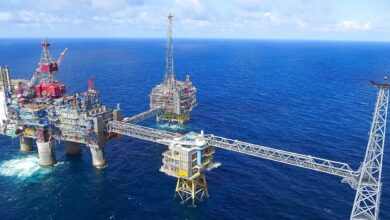BP continues use of riser insertion tube tool, planning for ‘top kill’ operation

The riser insertion tube tool (RITT) containment system BP installed at the end of the leaking riser on Macondo well is estimated to be collecting approximately 3,000 bbl/day of oil and some 14 million cu ft/day of gas. The oil is being stored and gas is being flared on Transocean’s Discoverer Enterprise drillship.
The RITT involves inserting a 4-in. tube into the Deepwater Horizon riser (21 in.) between the well and the broken end of the riser on the seafloor. The insertion tube is connected to a new riser to allow hydrocarbons to flow up the Discoverer Enterprise.
BP also continues to develop its “top kill” operation, where heavy drilling fluids would be injected into the well to stem the flow, followed by cement to seal the well. Most of the equipment is on site, according to BP, and deployment is expected in the next few days. Options have also been developed to potentially combine this with the injection under pressure of a variety of materials into the BOP to seal off upward flow.
Work continues on drilling two relief wells to intercept the existing well.
More than 930 vessels are now involved in the surface spill response and containment effort. Approximately 187,000 bbls of oily liquid have been skimmed from the surface of the water. More than 1.9 million ft of boom have been deployed in an attempt to prevent oil from reaching the coast.
On 21 May, BP launched a live webcam of the riser flow. Click here to see the live feed.




